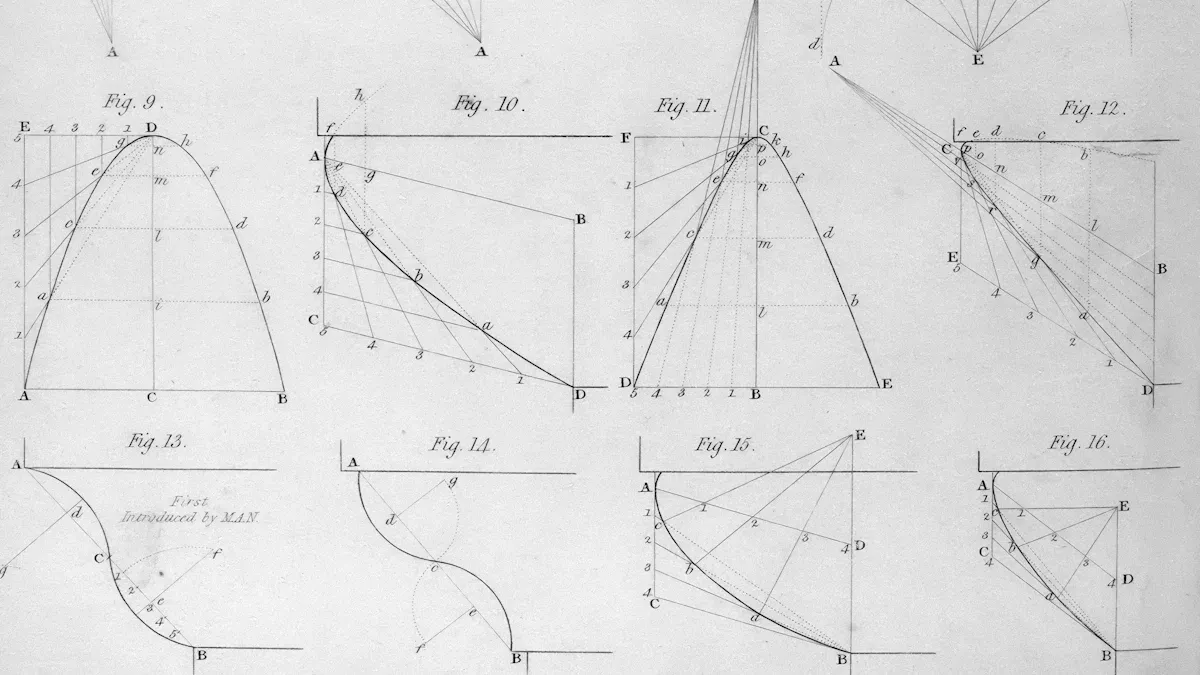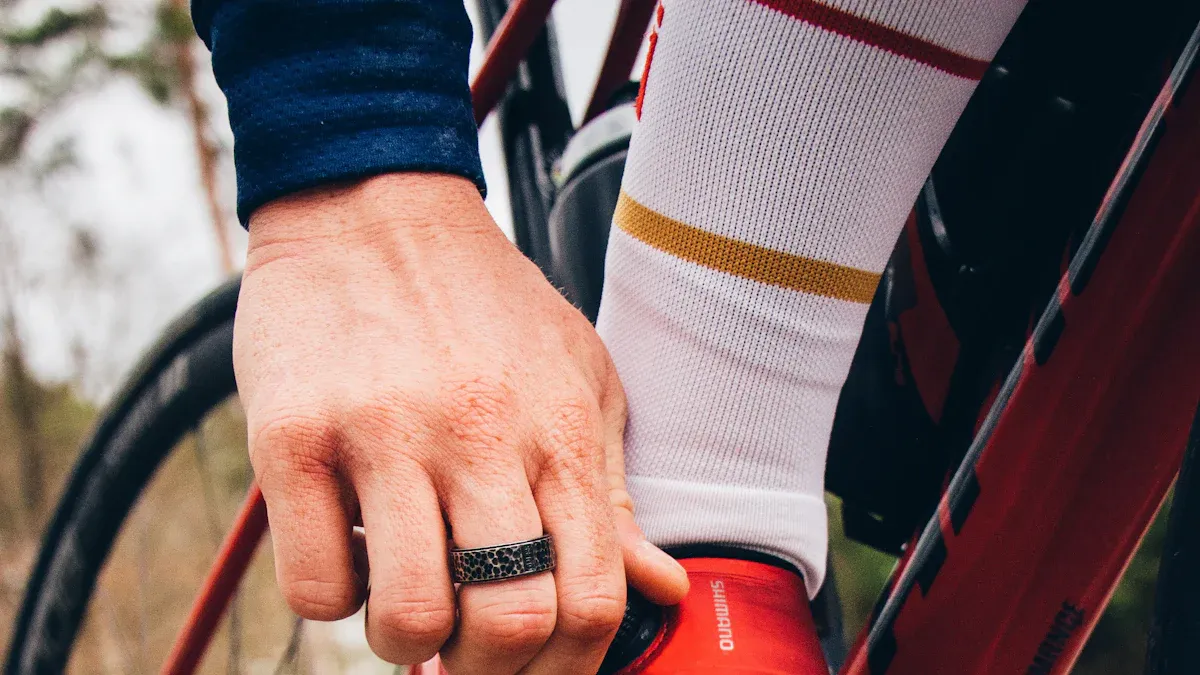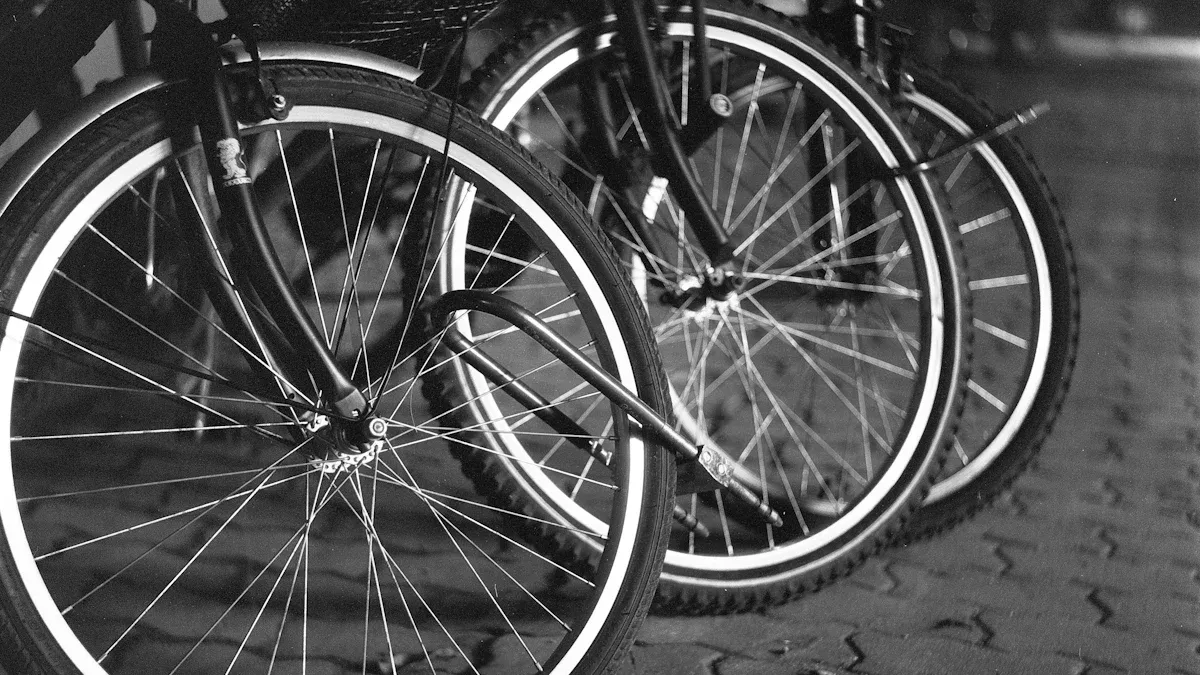
Bike frame geometry diagrams show important measurements for your cycling. They include things like reach, stack, head tube angle, and seat tube angle. Knowing these details helps you choose a bike that matches your riding style and likes. By looking at a bike frame geometry diagram, you can make smart choices that improve handling and comfort. This information is key for boosting your performance on the road or trail.
Key Takeaways
Knowing bike frame geometry helps you pick a bike that fits you. This makes riding more comfortable and improves how well you ride.
Important measurements like reach and stack change your riding position. A bigger stack gives you a more upright position. A longer reach can make you feel stretched out.
The head tube angle affects how the bike handles. A steeper angle lets you turn faster. A slacker angle gives you more stability, especially when going fast.
Changing your bike’s geometry, like adjusting the stem height or tire sizes, can improve your fit and performance on different surfaces.
A good bike fit lowers the chance of injuries. It also makes your cycling experience better, making long rides more fun.
Bike Frame Geometry

Overview of bike frame geometry and its significance
Define bike frame geometry and its role in cycling.
Bike frame geometry means the specific sizes and angles of a bicycle’s frame. These sizes include reach, stack, head tube angle, and seat tube angle. Knowing these details helps you pick a bike that fits your body and riding style. A bike that fits well makes you more comfortable and improves your performance on the road or trail.
Here are some common parts shown in bike frame geometry diagrams:
Reach
Head Tube (angle and length)
Fork Rake (or Offset)
Trail
Seat Tube (angle)
Other sizes and parts
Discuss how geometry affects ride quality and handling.
The geometry of your bike is very important for how it rides and feels. For example, a steeper head tube angle makes the bike more responsive, which helps with quick turns. On the other hand, a slacker angle gives you more stability, especially when going fast.
Think about these points on how bike geometry changes your cycling experience:
A seat tube angle (STA) between 72° and 76° is best for road cyclists who want to race.
Triathletes do better with a steeper STA (over 76°) for comfort and efficiency during transitions.
A higher STA helps you get into a more aerodynamic position, which reduces drag at high speeds.
By learning about bike frame geometry, you can make smart choices that improve your cycling experience. Whether you ride for fun or competition, the right geometry can greatly boost your performance and enjoyment.
Key Measurements in Bike Geometry

Reach and Stack
Knowing about reach and stack is very important for choosing the right bike. Reach is the horizontal distance from the bottom bracket to the top of the head tube. This distance affects how stretched out you feel when riding. A longer reach can make you feel more extended, which might not be comfy for everyone.
On the other hand, stack is the vertical distance from the bottom bracket to the top of the head tube. A bigger stack gives you a more upright riding position. This can make you feel more comfortable, especially on long rides.
Here are some key points about reach and stack:
A bigger stack measurement gives you a more upright riding position.
A longer reach measurement makes you feel more stretched out.
For example, the Specialized Roubaix has a higher stack (605mm) and shorter reach (384mm) than the Tarmac (stack: 565mm, reach: 395mm). This means you sit more upright on the Roubaix. The Trek Domane also has a higher stack (591mm) and shorter reach (377mm) than the Madone (stack: 563mm, reach: 391mm), showing a more comfy position on the Domane.
Changes in stack and reach really affect how a bike handles, like its stability and agility. These measurements are key for how a bike feels to you, which impacts comfort and control. A bike with a larger trail feels more stable, while a smaller trail helps with quick turns, which is important for different types of cycling.
Effective Top Tube Length
The effective top tube length is another important measurement in bike geometry. It is the horizontal distance between the seat tube and the head tube. This measurement is very important for your comfort and aerodynamics.
Mountain bikes usually have a longer effective top tube length than road bikes.
The difference in length is about 4-6 cm.
The design and riding position make mountain bikes have a longer top tube.
A longer effective top tube can make you feel stretched out, which can affect comfort on long rides. On the other hand, a shorter top tube might make you feel cramped, which can also hurt comfort.
Angles in Bike Geometry
Head Tube Angle
The head tube angle is very important for how your bike rides. This angle is between the ground and the head tube. The head tube is where the front fork connects to the frame. Knowing this angle helps you understand how your bike will act when you ride.
Typical head tube angles change with bike types:
Road bikes: average head tube angle of 73 degrees
Gravel bikes: average head tube angle of 72 degrees
Mountain bikes: average head tube angle of 67 degrees
A steeper head tube angle makes steering quicker and more responsive. This helps you turn better in tight spots. But it might feel shaky at high speeds. On the other hand, a shallower head tube angle gives you more stability. This makes handling smoother, especially when going downhill, but can sometimes lead to understeer.
The way the head tube angle, fork rake, and trail work together is key for bike handling. For example, cross-country bikes usually have steeper head angles for quick turns. Meanwhile, enduro and downhill bikes often have slacker angles for more stability.
Seat Tube Angle
The seat tube angle greatly affects how well you pedal and your riding position. This angle is between the seat tube and a horizontal line. A steeper seat tube angle can help you push harder during the downstroke, which improves your performance.
Studies show that steeper seat tube angles can make pedaling more efficient. They help you stay in a better position to generate power. While experts still debate how muscles work together, many studies show that a steeper angle helps a rider’s performance.
Here’s how different seat tube angles change rider positioning:
Seat Tube Angle | Effect on Rider Positioning | Performance Focus |
|---|---|---|
Steeper (75-78°) | Forward position, helps aerodynamics | Sprint cycling, simulates running motion |
Shallower (73-74°) | More powerful position for climbing | Endurance cycling, better for lower cadences |
Picking the right seat tube angle can help you balance comfort and performance. A steeper angle may help sprinters, while a shallower angle can help endurance riders on long climbs.
Knowing these angles in bike geometry helps you make smart choices about your bike setup. You can improve how your ride feels and handles based on your cycling style and likes.
Mountain Bike Geometry
Mountain bike geometry is very important for how your bike works on different surfaces. Knowing the differences between slack and steep angles helps you pick the right bike for your style.
Slack vs. Steep Angles
When you check mountain bike geometry, head tube angles are key. A slacker head tube angle makes the bike more stable at high speeds. It helps the bike go over bumps easily, which is great for steep areas. But, this can make handling less precise and create a longer wheelbase, making it harder to turn on narrow trails.
In contrast, a steeper head tube angle allows for faster steering and better control at lower speeds. This helps when climbing and getting around tight spots. For example, the Lux has a 68.5-degree head angle, which gives quicker steering but less stability at high speeds. On the other hand, the Sender has a 63-degree head angle, which provides more stability and confidence at high speeds but slower steering, making it harder to climb.
Chainstay Length
Chainstay length also greatly affects how your mountain bike performs. Shorter chainstays can make your bike more responsive and improve traction when climbing. They help you turn quickly, especially on tricky trails. However, longer chainstays give you more stability and comfort, especially when sitting and climbing.
Here are some important points about chainstay length:
Longer chainstays provide stability and comfort.
The whole bike design, including weight balance, affects climbing performance.
Focusing only on chainstay length can lead to bad handling, which might cancel out the benefits of better traction. So, think about the whole bike geometry when making your choice.
Understanding these parts of mountain bike geometry will help you make smart choices. Whether you like steep climbs or tricky descents, the right geometry can improve your riding fun.
Interpreting Bike Geometry Diagrams
Trail and Wheelbase
Knowing about trail and wheelbase is important for reading bike geometry diagrams. Trail is the distance from where the front wheel hits the ground to where the steering axis meets the ground. A bigger trail measurement makes your bike more stable. This helps you feel safe and secure when riding fast. On the other hand, a shorter wheelbase can help you steer faster but might make you feel less stable, especially at high speeds. Finding the right balance between trail and wheelbase is key for good handling and control.
A longer wheelbase usually gives you more stability.
A shorter wheelbase helps with quick turns but can feel less steady at high speeds.
Comparing Different Bike Types
When you look at different bike types, you will see big differences in their geometry diagrams. Knowing these differences is important because they affect how a bike feels and works. Small changes in geometry can lead to big differences in ride quality.
Road bikes usually have steeper head tube angles for quick handling, which is great for racing.
Gravel bikes have head angles that are between road and mountain bikes. This design gives a mix of quick handling for road-like rides and stability for off-road use.
Mountain bikes often have slacker angles for better stability on rough ground.
For example, a road bike like the Aeroad has a steep head angle for fast steering. In contrast, a gravel bike like the Grail has a slacker angle, which helps you feel more confident on bumpy surfaces.
By knowing these geometry details, you can choose bikes that improve your riding experience based on different terrain challenges. This knowledge helps you get a better fit and handling, which directly affects your performance on various terrains.
Finding the Right Fit
Importance of Proper Fit
Getting the right bike fit is very important for your comfort and performance. A good fit helps you keep a comfortable riding posture. This helps you feel less tired during long rides and makes your cycling experience better. Here are some key benefits of a good bike fit:
A proper bike fit uses ergonomics and tested equipment to improve riding technique. This helps lower the chance of getting hurt.
A precise bike fit reduces the risk of injuries from overusing your joints and muscles.
When you ride a bike that fits you well, you can enjoy the ride without discomfort. This is especially important for long-distance cyclists who spend many hours on their bikes.
Adjusting to Different Geometries
Adjusting to different bike geometries can really change your riding experience. Here are some good ways to make those adjustments:
Method | Description |
|---|---|
Rider position | Changing rider position, like lowering the stem height, can change bike dynamics by shifting weight distribution. |
Offset shock hardware | This method changes the effective eye-to-eye length of the shock, allowing for adjustments in BB height and head angle without compressing the shock. |
Angle-adjust headsets | These headsets allow for different head angle adjustments, improving bike handling and stability. |
Tyre & wheel sizes | Changing tyre width can affect bike height and geometry, allowing for more customization of handling characteristics. |
By learning how to adjust your bike, you can improve your fit and boost your performance. Whether you ride on smooth roads or rough trails, the right adjustments can greatly change how your bike feels and handles.
Knowing bike frame geometry is very important for improving your cycling. Key measurements like head tube angle, seat tube angle, and wheelbase affect how your bike rides. For example, a steeper head tube angle helps with quick steering, while a longer wheelbase makes it more stable.
Keep these important points in mind:
A steeper seat tube angle helps you pedal better.
Stack and reach change how comfortable you feel and how well you cut through the air.
Different materials, like aluminum and titanium, change how the bike feels when you ride.
By understanding these ideas, you can make smart choices that lead to better performance and more fun on your rides. Use your knowledge of bike geometry to make your cycling adventures even better! 🚴♂️
FAQ
What is bike frame geometry?
Bike frame geometry means the specific sizes and angles of a bicycle’s frame. These include reach, stack, head tube angle, and seat tube angle. Knowing these sizes helps you pick a bike that fits your body and riding style.
How does bike geometry affect comfort?
Bike geometry affects your comfort by changing your riding position. A bike with the right stack and reach sizes lets you keep a comfy posture. This helps you feel less tired during long rides and makes your cycling experience better.
Why is the head tube angle important?
The head tube angle affects how your bike rides. A steeper angle gives quicker steering, while a slacker angle gives more stability. Picking the right head tube angle helps you ride on different terrains better.
Can I adjust my bike’s geometry?
Yes, you can change your bike’s geometry to improve fit and performance. You can change the stem height, use angle-adjust headsets, or change tire sizes. These changes help you get a more comfy and efficient riding position.
How do I know if a bike fits me?
To see if a bike fits you, check the reach and stack sizes. You should feel comfy and balanced when sitting. Test ride the bike to see how it handles and make sure it fits your riding style.
See Also
Understanding Large Sizing and Geometry for Mountain Bike Frames
The Importance of Selecting Proper Bike Frame Geometry
How to Determine Your Perfect Mountain Bike Size and Geometry
